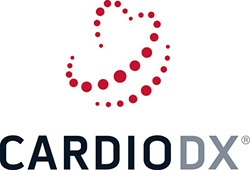CardioDx Completes $58 Million Equity Financing
CardioDx Completes $58 Million Equity FinancingProceeds to Support Commercial Expansion of Corus CAD and New Product Development
PALO ALTO, Calif. – August 27, 2012 – CardioDx, Inc., a pioneer in the field of cardiovascular genomic diagnostics, today announced the completion of a $58 million two-tranche equity financing. The financing included Temasek, an Asia investment company based in Singapore; and existing investors Longitude Capital; Artiman Ventures; Kleiner, Perkins, Caufield & Byers; J.P. Morgan; Mohr Davidow Ventures; TPG Biotech; Intel Capital; Acadia Woods Partners; Bright Capital; the venture arm of RU-COM; Pappas Ventures; DAG Ventures; Asset Management Group; and GE Capital. All previous investors participated in the round.
Proceeds from the financing will be used to support the commercial expansion of Corus® CAD, the only clinically validated gene expression test for obstructive coronary artery disease, and to develop additional genomic diagnostics in the field of cardiovascular disease.
“This funding positions CardioDx well to capitalize on the significant opportunity to improve the diagnosis of the millions of patients who visit their physicians with symptoms suggestive of obstructive coronary artery disease each year,” said David Levison, the company’s President and Chief Executive Officer. “The favorable Medicare coverage decision that we received earlier this month is a significant milestone that further validates the clinical benefit of and economic rationale for Corus CAD. This additional capital will help us expand our sales force in the U.S., further broaden reimbursement coverage, and support continued investments in research and development of new products.”
CardioDx recently announced that Palmetto GBA, a national contractor that administers Medicare benefits, has established coverage for the Corus CAD gene expression test for the evaluation of patients presenting with typical and atypical symptoms suggestive of coronary artery disease. With this decision, the Corus CAD gene expression test is now a covered benefit for more than 40 million Medicare enrollees in the U.S.
Studies have shown that typical and atypical presentations of stable chest pain account for up to two percent of outpatient office visits each year in the U.S., which equates to up to three million patients per year in the Corus CAD intended-use population. However, a study of nearly 400,000 patients published in The New England Journal of Medicine in 2010 reported that as many as 62 percent of stable patients who undergo elective invasive angiographic procedures are found to have no obstructive coronary artery blockage, despite broad usage of prior noninvasive imaging. The authors concluded that current modalities used to identify patients for elective invasive angiography to diagnose obstructive coronary artery disease have limitations, and that better methods are needed for patient risk stratification.
As much as $5 billion is spent on noninvasive testing, imaging and elective invasive angiography in the Corus CAD intended-use population annually in the U.S.



